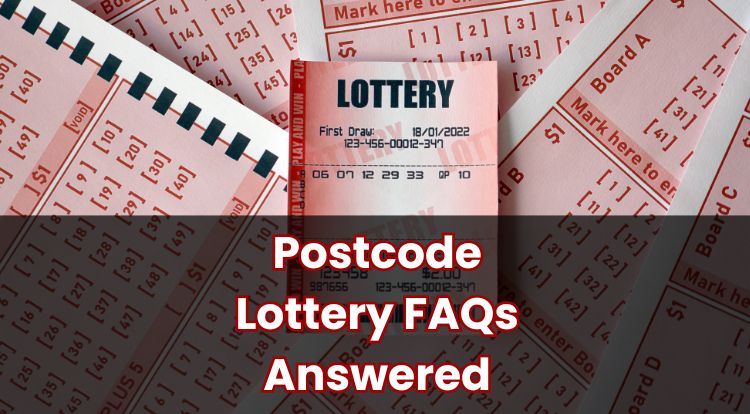Buying All Lottery Combinations Explained
Have you ever wondered what would happen if someone tried to buy every possible line in the UK National Lottery?
It’s a concept people sometimes talk about when discussing how to beat the odds. On the surface, it might sound clever – cover every option, and you’ll hit the jackpot, right? But there’s a lot more to it than just covering numbers.
This blog explores what it really means to attempt buying every combination in a single UK Lotto draw. You’ll find out how many combinations exist, how much it would cost, the practical and legal barriers to doing it, and whether it’s worth considering at all.
If you’re new to the lottery or just curious, this guide can help you understand how it works using real figures and simple examples.
How Many Different Lottery Combinations Are There?
In the UK National Lottery’s Lotto game, you choose six numbers from a pool of 59. These numbers must be different, and the order in which they are drawn doesn’t matter.
To calculate how many possible combinations there are, we use a formula from probability:
- C(n, k) = n! / (k!(n-k)!)
- Where n = 59 and k = 6
The result is 45,057,474 different six-number combinations. Each of these is known as a unique line.
To put this into context:
- A line might be: 1, 14, 21, 30, 41, 56
- Another might be: 2, 3, 25, 35, 50, 59
Each is completely separate, and no two lines can repeat the same group of six numbers. You cannot include the same number twice in one line.
Different countries have different rules for their national lottery games. Some may use fewer numbers, which means fewer combinations, while others might have different draw structures entirely. For example, in the Irish Lotto, you pick 6 numbers from a pool of 47, which leads to fewer possible combinations (just over 10 million).
Does Buying All the Tickets Guarantee a Win?
If you managed to enter all 45,057,474 combinations into a single UK Lotto draw, you would have covered every possible outcome. That means one of those lines would match the six drawn numbers.
However, that doesn’t mean you’re guaranteed to make more than you spent.
Consider the costs:
- Each Lotto line costs £2
- 45,057,474 lines × £2 = £90,114,948 total spend
Now compare that to the jackpot:
- Standard UK Lotto jackpots usually range from £2 million to £5 million
- Even during a rollover, the maximum jackpot is around £50 million
If someone else also matches the winning numbers, you’d split the prize. So, even if you held the correct line, you might end up with less than expected.
There are smaller potential prizes for matching three, four, or five numbers. But the value of those prizes doesn’t scale up in a way that would recoup a £90 million spend. Most three-number matches pay £30, and four-number matches pay around £100.
Why You Can’t Actually Buy Every Combo
Even if you had the funds, there are several reasons why it isn’t realistic to try entering all possible combinations.
Practical limitations:
- Lotto limits you to 7 lines per ticket
- You can submit up to 10 tickets per transaction, totalling 70 lines per purchase
- It would take over 643,000 transactions to submit 45 million lines
There’s also a cut-off time for buying tickets. UK Lotto draws close at 7:30pm on draw days, usually Wednesday and Saturday. Getting millions of tickets processed before the deadline would require an enormous team and a flawless system.
The official operator and retailers may also block any large or unusual purchases. Their systems are designed for everyday players, not bulk-buying on this scale.
There have been attempts elsewhere. In 1992, an Australian syndicate tried this strategy in a local lottery with just over 7 million combinations. They printed and submitted physical tickets, managing to win. But they nearly missed the deadline, and multiple winners meant the prize was shared. After costs, their profit was small.
Is Buying All Lottery Combinations Even Legal?
There is no specific UK law that says you can’t try to buy every combination. However, rules set by the UK Gambling Commission (UKGC) and the official National Lottery operator make it nearly impossible in practice.
These rules are in place to:
- Prevent misuse of gambling products
- Limit excessive spending
- Protect players and the integrity of the draw
The system automatically restricts how many lines you can enter per transaction. Attempting to get around this using multiple accounts or coordinated teams may raise flags and lead to entries being blocked or investigated.
Retail staff are trained to report any unusual behaviour. The lottery is designed for recreational play, not industrial-scale entry.
How the Odds Work With Multiple Tickets
Every Lotto line you buy gives you a separate chance at the jackpot. The odds of matching all six numbers with one line are:
- 1 in 45,057,474
If you buy 10 lines:
- Your odds become 10 in 45,057,474, or 1 in 4,505,747
This is technically better, but still extremely unlikely.
There is no strategy or system that increases your chances beyond buying more tickets. Every draw is random and independent. Previous results have no influence on future ones.
Some people choose numbers they think are ‘due’, or avoid ‘popular’ numbers to try and reduce the chance of sharing a potential prize. However, these are personal preferences and not proven to change outcomes. The draw machine doesn’t recognise patterns or avoid repetitions.
Each type of lottery has different odds and possible prize structures. For example:
- The UK Thunderball has slightly better odds (1 in 8 million), but a lower jackpot (£500,000)
- The EuroMillions has much longer odds (1 in 139 million), but larger potential payouts
What suits one player might not suit another. It depends whether you prefer slightly better chances at a smaller possible prize, or longer odds for a potentially bigger win.
Should You Ever Try Covering All Combinations?
Trying to cover every possible line in the UK Lotto is not considered a practical strategy. Even with unlimited funds, you’d face:
- Enormous logistical issues
- Entry limits per purchase
- Time restrictions before the draw
- Operator safeguards designed to prevent high-volume play
You’d also face the financial reality that the jackpot may not outweigh the cost, and smaller potential prizes won’t make up the difference.
Lotteries are designed as games of chance. There are no systems or patterns that can change that. It can be helpful to understand the odds and how the draw works, but it’s important to know that every line has exactly the same chance of being drawn as any other.
If you choose to take part in any lottery, consider these safer gambling tips:
- Set a budget and stick to it
- Don’t chase losses
- Avoid trying to “win back” money by increasing your spend
- Treat it as a form of entertainment, not a way to make money
For confidential advice and tools to help manage your play, visit BeGambleAware.org.
*All values (Bet Levels, Maximum Wins etc.) mentioned in relation to these games are subject to change at any time. Game features mentioned may not be available in some jurisdictions.
**The information provided in this blog is intended for educational purposes and should not be construed as betting advice or a guarantee of success. Always gamble responsibly.




